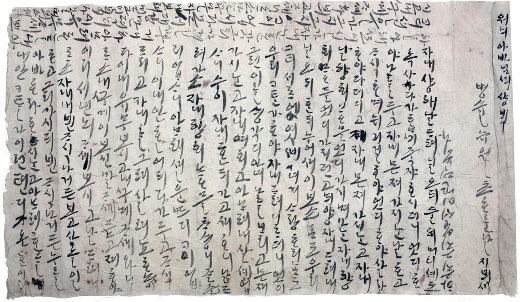This 500 Year Old Korean Love Letter Tells A Story Of Love And Sorrow Deeper Than Any K-Drama
Archaeologists have discovered a 500 year old heartbreaking Korean love letter written by a pregnant widow to her husband, father of her unborn child.
In April 1998, archaeologists uncovered the coffin of Eung Tae Lee, a 16th century male who passed away at age 30, in an ancient tomb in Andong City, South Korea.
Now you may be expecting this story to take a steep turn into the genre of horror, but what the archaeologists found may very well be the most touching yet romantic discovery EVER.
Along with his mummified body, both a love letter and a pair of sandals were placed next to him. The pair of sandals were handmade by his distraught wife, who wove them with a combination of hemp bark and her own hair.
The wife’s translated letter reads:
“To Won’s Father
June 1, 1586
You always said, ‘Dear, let’s live together until our hair turns gray and die on the same day.’ How could you pass away without me? Who should I and our little boy listen to and how should we live? How could you go ahead of me?
How did you bring your heart to me and how did I bring my heart to you? Whenever we lay down together you always told me, ‘Dear, do other people cherish and love each other like we do? Are they really like us?’ How could you leave all that behind and go ahead of me?
I just cannot live without you. I just want to go to you. Please take me to where you are. My feelings toward you I cannot forget in this world and my sorrow knows no limit. Where would I put my heart in now and how can I live with the child missing you?
Please look at this letter and tell me in detail in my dreams. Because I want to listen to your words in detail in my dreams, I write this letter and put it in. Look closely and talk to me.
When I give birth to the child in me, who should it call father? Can anyone fathom how I feel? There is no tragedy like this under the sky.
You are just in another place, and not in such a deep grief as I am. There is no limit and end [to my sorrows] that I write roughly. Please look closely at this letter and come to me in my dreams and show yourself in detail and tell me. I believe I can see you in my dreams. Come to me secretly and show yourself. There is no limit to what I want to say and I stop here.”

Source: Archive Archaeology
